Don't wanna be here? Send us removal request.
Note
My abuser made me use NVC as a way of exerting control over the language I used. He said "I hear you" when I told him I was hurt as though that absolved him, and never changed his behavior. If I didn't use NVC he would use that as proof of me being the one with the real problem and berated me for it. I read your post on NVC & abuse after a Google search for "nvc abusers" and i'm actually triggered right now. Using the words that my abuser wanted me to use did not magically liberate me.
Hi!
Are you triggered because the post made you realise how your abuser was misusing NVC or because there’s content in my post that feels victim-blaming to you or because of something else? (Google just gives me one result for this blog when googling “nvc abusers”. Are we talking about this post? If not and if you decide to write another message, don’t write the link but just the title, because tumblr tends to make messages with links disappear.)
It seems that the topic of ‘using pseudo-empathy but not changing hurtful actions’ is not directly covered in my list so I’ll add it.
4 notes
·
View notes
Text
Hi everyone!
I just noticed that I’ve reached 100 followers. Welcome! :)
This blog is still a work in process but I have too many other things going on to do more here. I definitely do want to finish this project, though, and I think/hope that I’ll manage to do it in the first half of 2018.
0 notes
Text
Getting everyone’s needs met: parenting example
Question: How would I make sure that a 3-year-old gets enough to sleep?
[After making a realization during a talk with a physician, I had] the following dialogue with [my children]: I said to them, “Look, I think I haven’t been clear about why I want you to go to bed at night. Does anybody know?” I’d told them over and over but I had them guess again. And I said again, “I care about your health. That’s why I want you to get sleep, is that clear?” And my oldest son said, “But dad, sometimes we’re not tired then.” Well, that made sense to me. I’d hate to have somebody tell me – even if they cared about my health – if I didn’t wanna sleep. So I said, “How can we solve this?” And then I also realized something else […] that got all mixed up in this: I would say, my concern for their health was about 50%. And 50% was for my mental health. At a certain time of the evening I just wanted some relaxation and peace and so on. So I said, “Well, you know, I’m not only concerned about your well-being but you know what I mean by just liking time to yourself?” They understood, they have that same need. So I said, “How can we get everybody’s needs met?” And then my daughter came up with it, she had a great solution. She said, “Daddy, how about if we go to our room at 8 o’clock, then you can have time but then we can go to sleep when we want.” I said, “Let’s try.” It worked beautifully. The only problem was the first night, my youngest son, age three, I heard him up until 10 o’clock playing in his room and, oh, I had to control myself, not to get in there. And then the next morning he got up and [was] really grumpy… Then I had to hold my tongue so I didn’t say, “See, I told you...” And really, he got it. I think one other time he didn’t get enough sleep and then everybody got their needs met. He found his own rhythm and I got my needs met, they got their needs met.
Marshall Rosenberg, Nonviolent Communication. International Intensive Training
NVC series: Overview
14 notes
·
View notes
Text
Examples of the protective use of force: parenting
We lived on a busy street and I didn’t want them to take responsibility for how and when to across the street. So one day I’m out, moving the lawn and my 3-year-old starts running across the street. And I go and grab him and I tried to explain to him the danger of that. So sometimes we need to use the protective use of force. Never the punitive use of force, never punishment. So I said to him, “If I see you running to the street again, I’m so afraid that you’ll get hurt, I’ll put you in the yard.” Now the yard had a fence around it that he couldn’t open. Now this was not a prison, it had a slide in it, it was a great, nice place. But it was the protective use of force. So if I feel the person doesn’t have the understanding that it takes to really make a life-serving choice, I may use the protective use of force until they get it.
Participant: What if they want to watch more TV? I’m both glad and sad that I didn’t have the consciousness about TV when my children were younger ‘cause I would not have had a TV then, if I had seen the danger of what it does to the consciousness of people. So you’re saying what if they want to watch more TV? First I would really try to explain what programs I’m concerned about and why to see if we can get some agreement at least on which ones. And then the amount. And here might be a time where I would be sufficiently concerned about the effects that television has [to use the protective use of force]. ‘Cause television is a very dangerous narcotic. Even for adults. […] Do you know how many hours a week the average adult watches television in the United States? […] I’ll look it up, tonight. It was – I couldn’t believe it - about nine years of the average American’s life is used up watching television. […] At what they’re watching during that time, it is designed to turn your brain into… something else beside a brain. It’s a dangerous narcotic. So I’d really try to communicate this to the children as best as I could but I’m so concerned about it now, I’d probably use the protective use of force: I would have some technical friend of mine design to have the set go off every night at a certain time. Not to punish them but just to protect against having their brains turning into a couch potato.
Marshall Rosenberg, Nonviolent Communication. International Intensive Training
NVC series: Overview
3 notes
·
View notes
Text
Question: Can you find something positive about violence in the communication?
Marshall: Yes. I think, for example, I would rather have people be very angry and judging verbally than to think that it’s bad to be angry and push that down and not say it. But I think there’s another option that’s even better but until this person learns this other way, I think being a nice person and forcing your feelings down is worse. So I’d rather have the person screaming at me than repressing it.
Marshall Rosenberg, Nonviolent Communication. International Intensive Training
NVC series: Overview
14 notes
·
View notes
Quote
Nonviolent Communication is a language of life. It’s based on two questions and it says, if we know how to answer these two questions well and hear these two questions from other people, we’ll love human people a lot more, they’ll enjoy us a lot more and we’ll have peace and harmony in our relationships. If we keep our consciousness focused on these two questions. […] [The two questions are] ‘What’s alive in us?’ and ‘What would make life more wonderful?’ […] So the language I’ve pulled together, which I’ve labeled Nonviolent Communication is the best language that I’ve learned for capturing those two questions. But I seldom speak that language, formally, I seldom use the four components that I found best capture that technically, observations, feelings, needs, requests. I’d say 90% of the time I speak idiomatically. [...] To me, the words aren’t as important as the connection. If the connection works, then [the other person] would know what is alive in me and what would make life more wonderful for me. So that’s really what I’m always trying to do, is connect in that way.
Marshall Rosenberg, Nonviolent Communication. International Intensive Training
NVC series: Overview
10 notes
·
View notes
Quote
[…] Nonviolent Communication is not about communication. I mean, a little bit of it, a tiny little piece of it [is]. Nonviolent Communication is an integration of several things of which communication is just a little part. And Nonviolent Communication is certainly not the four steps. The more we think of it as mechanically, observation, feelings, needs, request, the harder it’s gonna be to live Nonviolent Communication. So what is it? […] For me the most important part of it is […] its purpose. […] And unless that consciousness is really what guides us, whatever comes out is probably not what I would call Nonviolent Communication. So what is that purpose or intention? To create a certain quality of connection with ourselves and other people, create a connection that allows compassionate giving and receiving to take place naturally.
Marshall Rosenberg, Nonviolent Communication. International Intensive Training
NVC series: Overview
8 notes
·
View notes
Text
News
I’ve totally changed the structure of the overview post, you might want to check that out. By doing so, I got more clarity about where I want to go with this, which posts I still want to create. I hope it made the critique also more clear for you.
I decided to buy the rest of the DVDs of workshops I didn’t yet have which means additional 40+ hours of material (and now I’m only missing one single small workshop of all the DVDs that are available and 3 CDs that aren’t available anywhere) and I’m really curious about whether there will be any important new insight. Since it obviously will take me some time to get through the DVDs, it will take some more weeks to get through this phase of the project but I’m hoping to get to 2.2 by the end of September.
If you have any questions, you’re always welcome to send me a message, the inbox is open.
1 note
·
View note
Photo
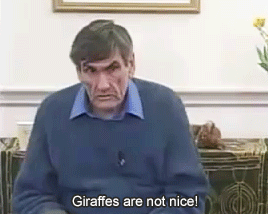
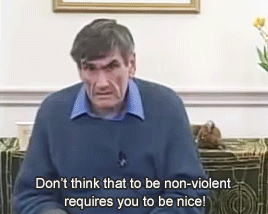
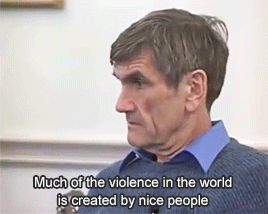
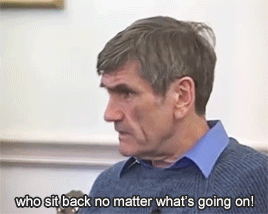
Giraffes are not nice! Don’t think that to be non-violent requires you to be nice! Much of the violence in the world is created by nice people who sit back no matter what’s going on!
No, no, no. Giraffe doesn’t require you to be nice! It requires you to either be expressing your pain or your joy or hearing the other person’s pain or joy. But if you’re not in joy, then you’re in pain, you let it be known! But you scream in giraffe. You don’t scream criticism. You scream feelings, needs, requests.
- Marshall Rosenberg, Making Life Wonderful. Workshop in San Francisco
Information: Giraffe and jackal NVC series: Overview
8 notes
·
View notes
Quote
We need to be prepared for the fact that for various reasons, the other person might not like the idea of learning this new approach to communication. So we need to be conscious that if we’re using Nonviolent Communication, we use it all the time regardless of how the other person speaks. So what I mean by that is that when this other person speaks in the language of blame and criticism I connect with what I sense is that person’s feeling and needing at the moment. Now, if I say it out loud to check and see whether I heard correctly, this might further aggravate them, they might see me using this process with them when they don’t like it. But if I even do it silently, I’m in a different world than if I take in that person’s criticism or blame or whatever. So even with people who are very uncomfortable with it, we still live the process by silently empathizing with what we hear is their feeling and need that they’re expressing through their criticism and blame. And then we need to try to find a way that we can express what’s alive in us, that the person can hear and this takes sometimes some practice in different ways we might get across feelings and needs to someone who’s not familiar with that language.
Marshall Rosenberg, NVC Online Training Course
NVC series: Overview
#nonviolent communication#nvc#forcing nvc mechanics#the other person does not have to talk nvc#street NVC
7 notes
·
View notes
Photo
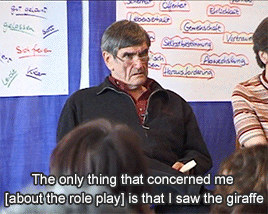
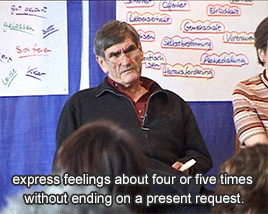
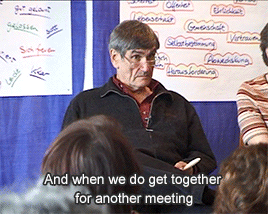
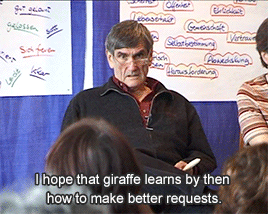
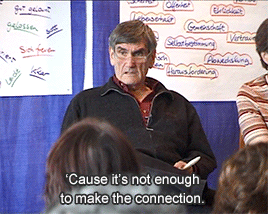
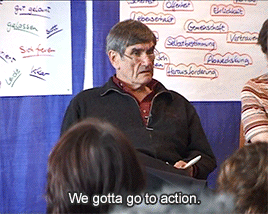
The only thing that concerned me [about the role play] is that I saw the giraffe express feelings about four or five times without ending on a present request. And when we do get together for another meeting I hope that giraffe learns by then how to make better requests. ‘Cause it’s not enough to make the connection. We gotta go to action.
- Marshall Rosenberg, NVC at the Workplace. Workshop in Munich 2002
Information: Giraffe and jackal NVC series: Overview
2 notes
·
View notes
Quote
Be careful about empathizing so well with the other person that you loose your needs in the process.
Marshall Rosenberg, Making Life Wonderful. Workshop in San Francisco
NVC series: Overview
4 notes
·
View notes
Photo
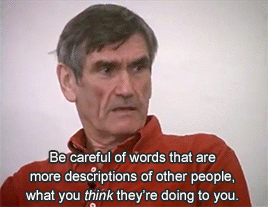
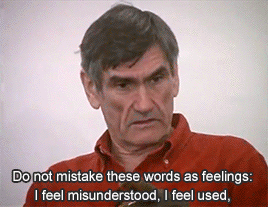
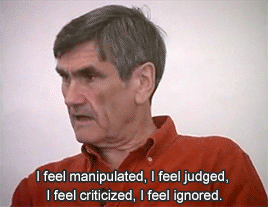
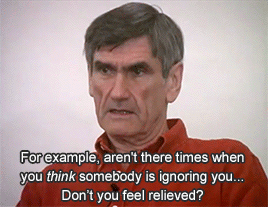
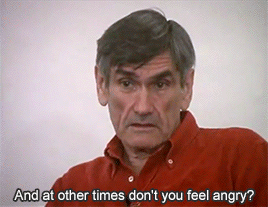
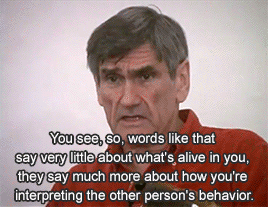
Be careful of words that are more descriptions of other people, what you think they’re doing to you. [...] Do not mistake these words as feelings: I feel misunderstood, I feel used, I feel manipulated, I feel judged, I feel criticized, I feel ignored. For example, aren't there times when you think somebody is ignoring you... Don’t you feel relieved? And at other times don't you feel angry? You see, so, words like that say very little about what's alive in you, they say much more about how you're interpreting the other person's behavior.
- Marshall Rosenberg, The Basics of NVC. Workshop in San Francisco 2000
NVC series: Overview
6 notes
·
View notes
Photo
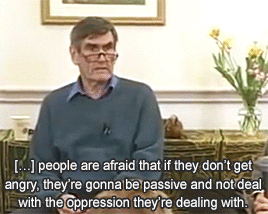
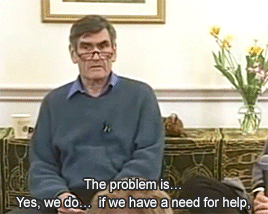
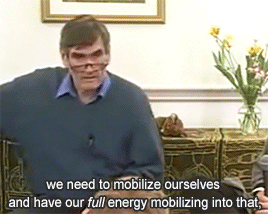
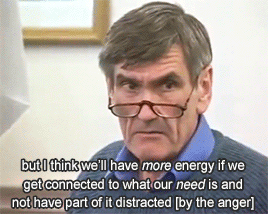
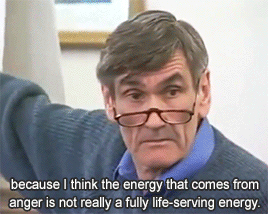
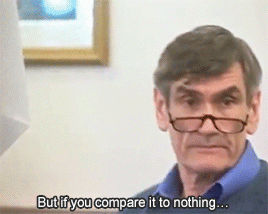
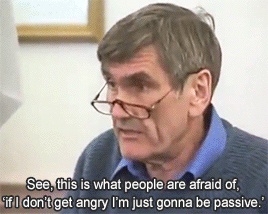
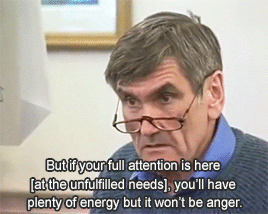
[…] people are afraid that if they don’t get angry they’re gonna be passive and not deal with the oppression they’re dealing with. The problem is… Yes, we do… if we have a need for help, we need to mobilize ourselves and have our full energy mobilizing into that, but I think we’ll have more energy if we get connected to what our need is and not have part of it distracted [by the anger] because I think the energy that comes from anger is not really a fully life-serving energy.
But if you compare it to nothing… See, this is what people are afraid of, ‘if I don’t get angry I’m just gonna be passive’. But if your full attention is here [at the unfulfilled needs], you’ll have plenty of energy but it won’t be anger.
- Marshall Rosenberg, Making Life Wonderful. Workshop in San Francisco
NVC series: Overview
6 notes
·
View notes
Photo

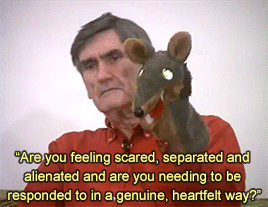
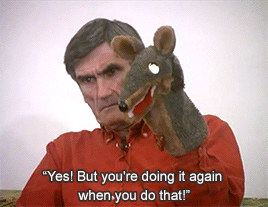
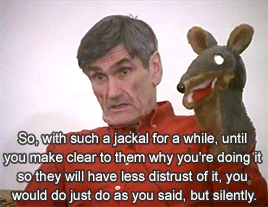
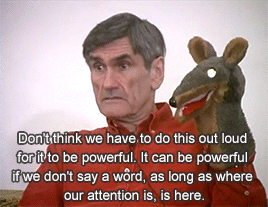
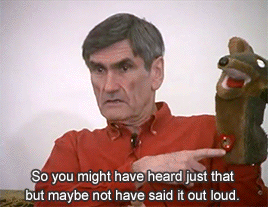
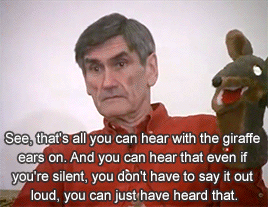
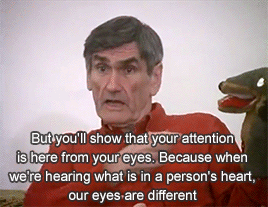
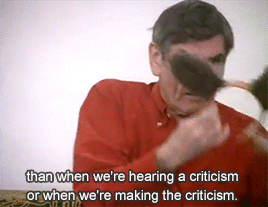

“You sound like you're reading from a book.” “Are you feeling scared, separated and alienated and are you needing to be responded to in a genuine, heartfelt way?” “Yes! But you're doing it again when you do that!” So, with such a jackal for a while, until you make clear to them why you're doing it so they will have less distrust of it, you would do just do as you said, but silently. Don't think we have to do this out loud for it to be powerful. It can be powerful if we don't say a word, as long as where our attention is, is here. So you might have heard just that but maybe not have said it out loud. See, that's all you can hear with the giraffe ears on. And you can hear that even if you're silent, you don't have to say it out loud, you can just have heard that. But you'll show that your attention is here from your eyes. Because when we're hearing what is in a person's heart, our eyes are different than when we're hearing a criticism or when we're making the criticism. Our eyes… it’s not subtle. Now, the advantage of being able to saying it out loud is the person can correct us if we're not accurate. But even if we don’t say it out loud, we live in a different world when we’re connecting here than when we’re hearing criticism.
- Marshall Rosenberg, The Basics of NVC. Workshop in San Francisco 2000
Information: Giraffe and jackal NVC series: Overview
#nvc#nonviolent communication#silent empathy#empathy#gif#gif set#street NVC#reactions to nvc#not about the words#forcing nvc mechanics#giraffe ears
4 notes
·
View notes
Photo
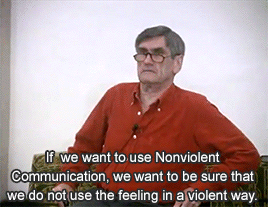
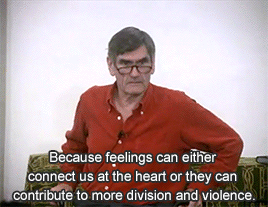

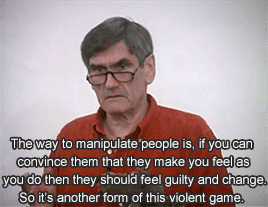
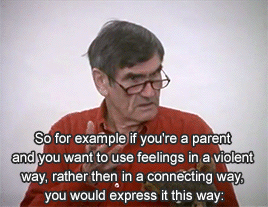
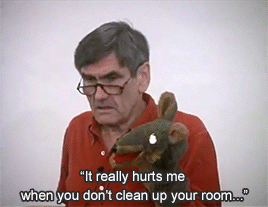
If we want to use Nonviolent Communication, we want to be sure that we do not use the feeling in a violent way. Because feelings can either connect us at the heart or they can contribute to more division and violence. So, we certainly do not want to ever express our feelings in this way: “I feel as I do because you.” Okay? We never want to express our feelings this way: “You make me feel.”
Now, that would be a hard habit to get away from because in a jackal culture, feelings are very instrumental to using guilt as a way of manipulating people, you see. The way to manipulate people is, if you can convince them that they make you feel as you do then they should feel guilty and change, you see. So it’s another form of this violent game. So for example if you're a parent and you want to use feelings in a violent way, rather than in a connecting way, you would express it this way: “It really hurts me when you don't clean up your room...” Okay? Or: “You make me angry when you say that!”
- Marshall Rosenberg, The Basics of NVC. Workshop in San Francisco 2000
Information: Giraffe and jackal NVC series: Overview
5 notes
·
View notes
Photo
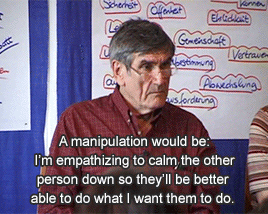
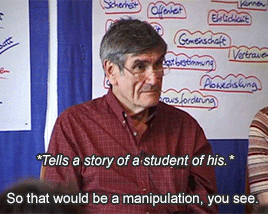
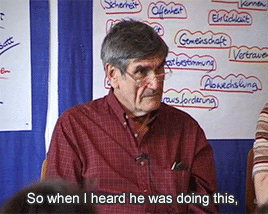
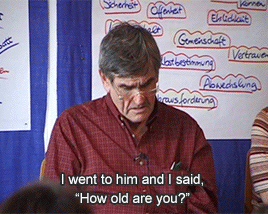


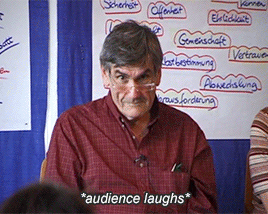
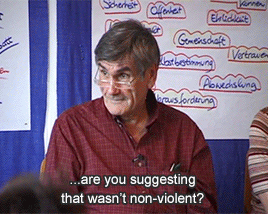
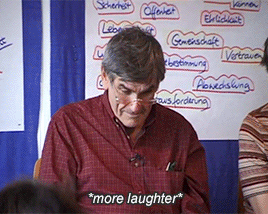
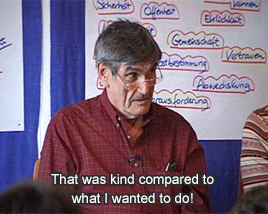
A manipulation would be: I’m empathizing to calm the other person down so they’ll be better able to do what I want them to do.
For example, a student of mine in the university, after he graduated he was making a lot of money. He was going into companies and teaching managers how to empathize with employees to keep unions from forming. ‘Cause you see, if you get employers that are very unhappy with things that are happening and you teach managers to empathize with them, they calm down and don’t try to change the structure.
So that would be a manipulation, you see.
So when I heard he was doing this, I went to him and I said, “How old are you?” He said, “29.” I said, “If you wanna be 30, stop it.”
*audience laughs*
Are you suggesting that wasn’t non-violent?
*more laughter*
That was kind compared to what I wanted to do!
- Marshall Rosenberg, NVC at the Workplace. Workshop in Munich 2002
NVC series: Overview
7 notes
·
View notes